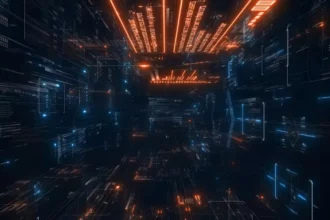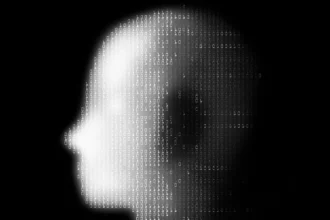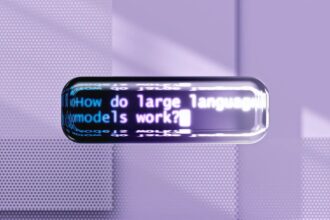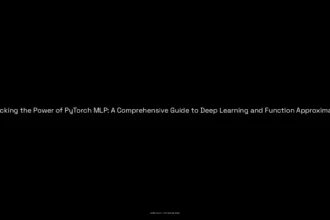Can a flat piece of art spring to life in three dimensions? It sounds like magic, but in the realm of artificial intelligence, transforming 2D images into dynamic 3D models is more than just a tantalizing dream. The technology behind this incredible feat has burst onto the scene, democratizing creativity and allowing everyday users—think artists, designers, and even hobbyists—to conjure captivating visuals with a mere click. Forget laborious hours in front of complicated software; AI is ushering in a new era where speed meets simplicity, ready to revolutionize how we perceive and create visual content.
- AI technology significantly simplifies the process of converting 2D images to 3D models, making it more accessible to non-experts.
- Tools like 3D AI Studio offer a user-friendly interface, streamlining the conversion process for users.
- AI conversion is remarkably fast, completing tasks in minutes compared to traditional methods that may take hours.
- The scalability of AI allows for the quick conversion of large batches of 2D images to 3D models.
- Utilizing AI for 2D to 3D conversion can be cost-effective, minimizing the need for expensive software and training.
- After uploading a 2D image and selecting output preferences, the AI generates a detailed 3D model that accurately reflects the original image.
- This technology is a game-changer for various industries, enhancing creative projects through easier 3D modeling capabilities.
Table of Contents
ToggleCan AI Turn 2D into 3D?
Absolutely, AI is reshaping the landscape of digital art and 3D modeling in a profound way. In the past, moving from 2D images to 3D models was not just a technical challenge; it often felt like climbing Everest without gear—demanding a mountain of skills and a deep understanding of complex software. Enter the age of AI! Tools like 3D AI Studio have broken down these barriers, making what once felt like an exclusive domain now approachable for anyone with an interest.
Consider this: speed is remarkably enhanced; AI can transform your 2D images into 3D wonders within minutes. This is a far cry from the tedious hours traditional methods require, which is a substantial time saver. But speed isn’t the only benefit. The accessibility factor cannot be overstated—no prior knowledge in sophisticated 3D modeling techniques is necessary. Even if your experience with design tools ranges from zero to minimal, you can seamlessly engage in this creative journey.
Furthermore, think about the cost-effectiveness. Instead of investing heavily in expensive software and training programs, you can switch to affordable AI tools that get the job done without burning a hole in your pocket.
The result? A democratization of creativity. Imagine small businesses being able to showcase their products as stunning 3D visuals for e-commerce platforms or indie game developers turning sketches into interactive game assets—all thanks to this AI-driven conversion.
The potential applications are staggering, spanning product visualization, game development, virtual reality, and more. As you get started, upload your 2D image with ease and hit that magic button to see it morph into a lifelike 3D model. As you await the final product’s arrival on-screen, you’re not just watching technology work; you’re witnessing a new era of artistic expression unfold.
No longer is converting 2D into 3D reserved for the tech-savvy elite. With AI making strides every day, anyone—whether a seasoned designer or an eager beginner—can tap into this innovative wave and explore endless creative avenues!
AI Capabilities in Converting 2D to 3D
AI-powered 2D to 3D conversion is a revolutionary technology that’s transforming the way we create and interact with 3D content. It’s no longer limited to specialized professionals; anyone can now create stunning 3D models from simple 2D images, even without prior 3D modeling experience. This accessibility has unlocked a wave of creativity and innovation across various industries.
Think about it: imagine generating intricate 3D models from a single 2D image with just a click of a button! It’s like having a team of 3D modelers at your fingertips, ready to bring your ideas to life. This speed and efficiency are game-changers for businesses, designers, and artists. It’s like having a superpower that lets you create realistic 3D models in a fraction of the time it used to take.
But the benefits go beyond just speed and convenience.
AI-powered 2D to 3D conversion also makes this technology more accessible and cost-effective. It eliminates the need for expensive 3D modeling software and extensive training, making it a viable option for anyone with a creative vision.
You don’t have to be a tech wiz to create amazing 3D content; AI is democratizing this technology, opening doors for everyone to explore the world of 3D.
This technology is already making waves in various industries, from product visualization and game development to architectural design and even medical imaging. It’s like a magic wand that can transform flat images into immersive 3D experiences, enhancing our ability to visualize, interact, and understand the world around us.
Tools for AI-Based 3D Model Generation
When it comes to converting 2D images into stunning 3D models, a plethora of platforms are stepping up to the plate, each with unique features and strengths. Let’s check out some of the most noteworthy tools shaking up this space:
- 3D AI Studio: Renowned for its intuitive user interface, 3D AI Studio makes uploading 2D images a breeze. Not only does it kickstart an efficient generation process, but it also produces high-quality 3D models that meet creative standards.
- Cadem: This powerhouse is no joke. Cadem harnesses potent AI to streamline the modeling process. It’s got something for everyone: seasoned pros can whip out impressive models without the hassle, while beginners can easily jump into the creative game, transforming their concepts into reality.
- Shap-E: An OpenAI gem, Shap-E truly breaks the mold with its ability to generate 3D objects from diverse inputs like images and even text. With its open-access model available on GitHub, creators have the freedom to explore and innovate with minimal restrictions. It’s a playground for the imaginative mind!
- Alpha3D: If speed is what you’re after, Alpha3D is your go-to tool. This platform not only boosts processing times but also offers flexible output formats tailored for a range of applications. Adapting to different project needs makes it an excellent choice for artists and developers alike.
The dynamic features of these platforms highlight how AI technology is transforming the 3D modeling landscape. Whether you’re looking for user-friendliness, extensive customization options, or swift generation speeds, there’s a tool in this ecosystem that will match your requirements perfectly.
How to Prepare Your 2D Image
I get it. You’re looking to get the best results from your 2D to 3D conversions, right? Let’s talk about how to prep your images for the AI magic. Think of it like getting a race car ready for the track—a little prep goes a long way.
First things first, SVG is the champion format here.
It’s like a blueprint for shapes, making it super easy for the AI to understand and create a perfect 3D model. It’s like having a map of the car’s design, so the AI knows exactly where everything goes.
But don’t fret if you have a PNG or JPG—those are like photos, but you can easily turn them into SVGs with online converters. Think of it as getting the photo translated into a blueprint, so the AI can work with it smoothly.
Once your image is in SVG format, you’re good to go.
Just head over to your chosen AI platform, upload the image, and hit “generate.” You’ll see the AI work its magic, like watching a 3D printer bring a design to life. Then, you can explore the model, make tweaks if needed, and download it in the format you want.
It’s like having a virtual workshop where you can build and refine your creation. Now, get out there and create some 3D wonders!
Applications of AI-Powered 2D to 3D Conversion
AI-powered 2D to 3D conversion is like a magic wand for creativity, opening up a whole new world of possibilities across various industries. It’s not just about turning flat images into 3D models; it’s about transforming how we design, visualize, and interact with the world around us.
Think about it:
- Product Visualization: Imagine a world where online shopping is as immersive as a real-life store. AI-powered conversion lets businesses create stunning 3D models of their products, giving customers a detailed, interactive view from every angle. It’s like holding the product in your hands without ever leaving your couch. This can lead to higher conversion rates and a more satisfying shopping experience.
- Game Development: In the realm of gaming, this technology is a game-changer. It speeds up the development process by allowing developers to transform concept art or reference images into fully realized 3D game assets. This means more time for creative exploration and less time struggling with complex 3D modeling software. It’s like giving game developers superpowers, allowing them to bring their visions to life faster than ever before.
- Architectural Visualization: Architects can use this technology to create breathtaking 3D representations of their designs, offering clients a vivid glimpse into their future projects. It’s like stepping into a virtual reality model of your dream home before it even exists. This level of detail and interactivity can help architects win over clients and make the design process more collaborative and engaging.
These are just a few examples of how AI-powered 2D to 3D conversion is transforming the world. It’s like a new wave of creativity, empowering businesses, designers, and artists to push the boundaries of what’s possible. It’s not just about speed and efficiency; it’s about unlocking new levels of artistic expression and innovation.
The Future of 2D to 3D Conversion with AI
By leveraging AI for converting 2D images into 3D models, you can join a rapidly growing wave of creativity and digital exploration.
As technology continues to evolve, expect even more sophisticated tools that will further streamline the process, creating endless possibilities for digital artists and professionals alike.
With platforms like 3D AI Studio and Shap-E leading the way, you’ll find converting 2D images to 3D models a breeze—not just a distant dream.
In summary, AI can save hours of manual modeling time while maintaining quality, making it an indispensable asset for both novice enthusiasts and seasoned professionals. Embrace this technology and experiment with your own images—unlock the potential of your creativity!
FAQ & Questions
Can AI effectively transform 2D images into 3D models?
Absolutely! AI technology has revolutionized the conversion of 2D images into 3D models, making it accessible and efficient. Tools like 3D AI Studio allow users to upload their 2D images and, with just a few clicks, generate intricate 3D models in mere minutes. This process eliminates the need for extensive 3D modeling skills, enabling artists and creators from various backgrounds to embrace 3D modeling.
What are the advantages of using AI for 2D to 3D conversion?
One notable advantage is speed. AI can handle conversions in minutes, compared to the traditional methods that can take hours or even days. Moreover, it reduces costs since users can avoid pricey software and training. The accessibility AI brings means that anyone, regardless of their technical background, can turn their imaginative sketches into dynamic 3D models.
What types of projects can benefit from AI-driven 2D to 3D conversion?
The applications are plentiful! For instance, in product visualization, businesses can quickly create 3D representations of their products, enhancing e-commerce experiences. Game developers can transform concept art into game assets efficiently. This technology empowers digital artists and creators, paving the way for unlimited creativity across industries.
Is there a specific tool recommended for converting 2D images to 3D?
3D AI Studio is highly recommended due to its user-friendly interface and robust AI capabilities. It seamlessly guides users through the process, from uploading images to generating 3D models, ensuring a smooth experience even for beginners.
How does the AI ensure the 3D model resembles the original 2D image?
Once you upload a 2D image and select the output settings, the AI utilizes advanced algorithms to process the image. This technology analyzes various features and creates a 3D model that captures the essence and details of the original 2D artwork, reflecting its nuances effectively.
Can AI generate 3D models from different input types besides images?
Indeed! AI models like OpenAI’s Shap-E can create 3D models from a variety of inputs, including text, images, and video. This versatility opens up new creative paths, allowing even more ways to conceptualize and visualize ideas in three dimensions.
What file formats are typically supported when exporting 3D models generated by AI?
Most AI tools will allow users to export their generated 3D models in widely accepted formats like GLB, making it easy to integrate the creations into different 3D design tools or XR environments. Having versatile formats ensures compatibility with various platforms, further enhancing the usability of the created models.





